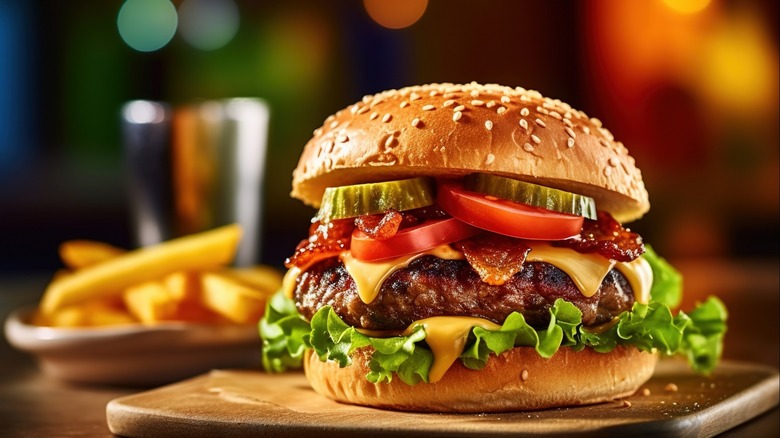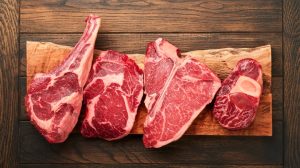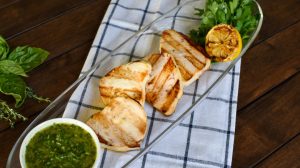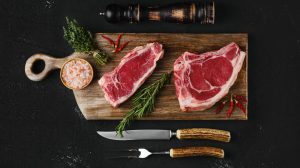Biting into a perfectly made burger is one of life’s simple pleasures. However, that experience can quickly turn into a sad, soggy affair if the bun becomes drenched in the juices from wet toppings. Top of the list of culprits here is the moisture from the add-on veggies. The solution? Simply dabbing those wet toppings with a paper towel before placing them on your burger. This extra step may seem trivial, but it makes a significant difference.
Gently pressing a paper towel against the tomatoes and pickles will reduce the natural juices they carry without compromising their freshness or flavor. The same trick works for unique toppings like pineapples. For lettuce — or shake it up with lettuce alternatives like spinach, kale, or cabbage — their moisture content results from washing them, so use your paper towels to blot out the residual water droplets before assembling your burger.
Another wet culprit you shouldn’t overlook is the burger patty itself. The secret here is choosing the right meat. A patty that’s too fatty can release a lot of grease, contributing to a soggy bun situation. Opting for leaner cuts or even incorporating a mix of meats can be the trick to a less greasy, more structured burger. Furthermore, failing to rest the patty after grilling is one common mistake that everyone makes with hamburgers and that leads to a soggy bun. A well-rested patty means the juices get redistributed within the meat and prevent a flood of liquid from spilling out the moment you bite into your burger.
Other tips to avoid a soggy burger
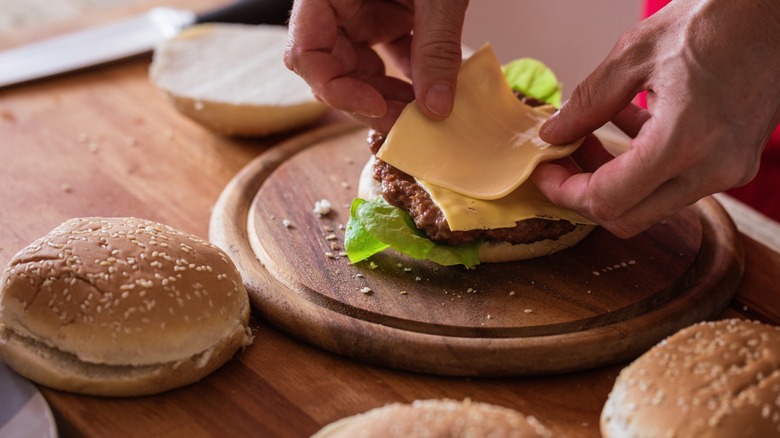
Besides managing moisture from toppings and patties, there are other strategies to avoid soggy-bun syndrome. Firstly, consider the type of bun you’re using. A too-soft or spongy bun can easily get overwhelmed by moisture. Choosing a sturdier variety or toasting your bun can make a huge difference. Not only will the slight crust on the bun’s surface act as a barrier against moisture and combat sogginess, but also you’ll end up with a delightful crunch and flavor.
Creating barriers is another effective method. One way to do this is by applying a condiment, like mayonnaise or butter, on the bun before assembling your burger. These fatty spreads create a moisture-resistant layer, helping to keep the bun dry. Additionally, the arrangement of toppings plays a crucial role. For example, placing lettuce or cheese directly on the bun before adding wetter ingredients can act as a protective layer, reducing the direct contact of any juices with the bun.
Lastly, how you eat your burger can limit the sogginess. An unconventional yet practical hack is to flip your burger and eat it upside down. The top bun with its crusty surface is typically thicker and can better handle the weight and moisture of the toppings, reducing the likelihood of ending up with a soggy mess. Implement some or all of these tips, and you can enjoy a delicious non-soggy burger every single time.



